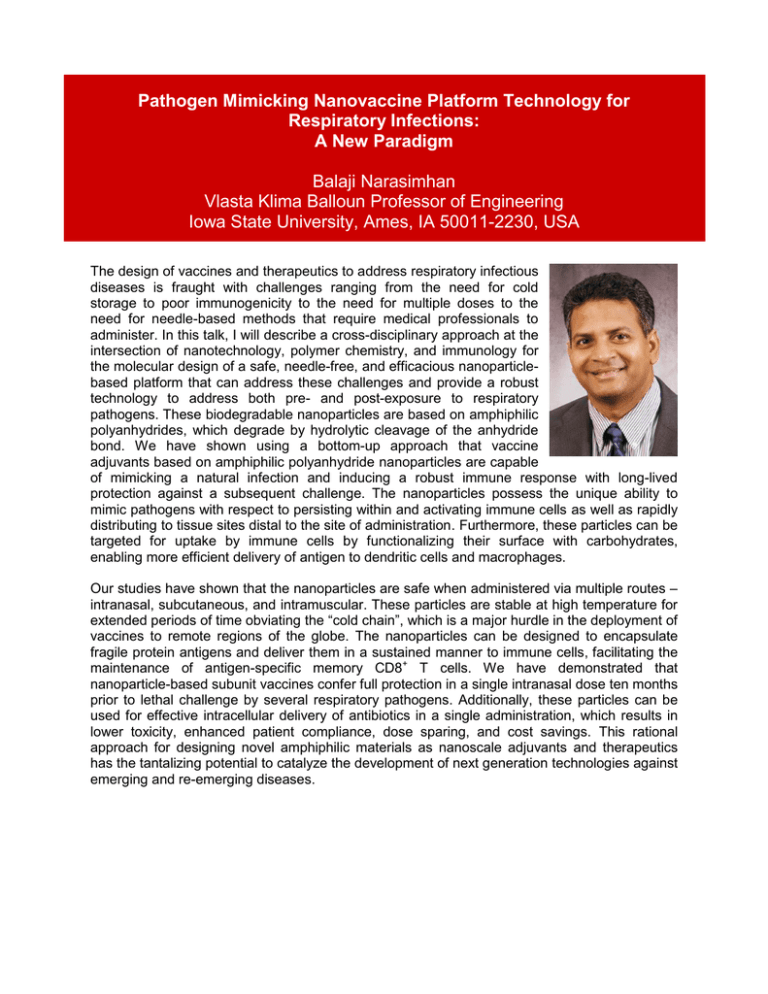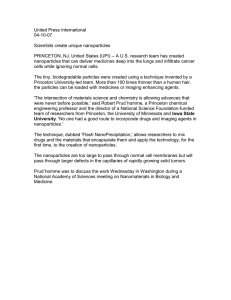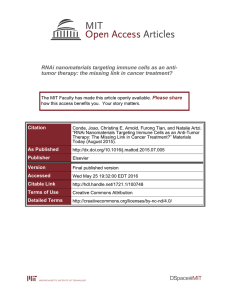Pathogen Mimicking Nanovaccine Platform Technology for Respiratory Infections: A New Paradigm
advertisement

Pathogen Mimicking Nanovaccine Platform Technology for Respiratory Infections: A New Paradigm Balaji Narasimhan Vlasta Klima Balloun Professor of Engineering Iowa State University, Ames, IA 50011-2230, USA The design of vaccines and therapeutics to address respiratory infectious diseases is fraught with challenges ranging from the need for cold storage to poor immunogenicity to the need for multiple doses to the need for needle-based methods that require medical professionals to administer. In this talk, I will describe a cross-disciplinary approach at the intersection of nanotechnology, polymer chemistry, and immunology for the molecular design of a safe, needle-free, and efficacious nanoparticlebased platform that can address these challenges and provide a robust technology to address both pre- and post-exposure to respiratory pathogens. These biodegradable nanoparticles are based on amphiphilic polyanhydrides, which degrade by hydrolytic cleavage of the anhydride bond. We have shown using a bottom-up approach that vaccine adjuvants based on amphiphilic polyanhydride nanoparticles are capable of mimicking a natural infection and inducing a robust immune response with long-lived protection against a subsequent challenge. The nanoparticles possess the unique ability to mimic pathogens with respect to persisting within and activating immune cells as well as rapidly distributing to tissue sites distal to the site of administration. Furthermore, these particles can be targeted for uptake by immune cells by functionalizing their surface with carbohydrates, enabling more efficient delivery of antigen to dendritic cells and macrophages. Our studies have shown that the nanoparticles are safe when administered via multiple routes – intranasal, subcutaneous, and intramuscular. These particles are stable at high temperature for extended periods of time obviating the “cold chain”, which is a major hurdle in the deployment of vaccines to remote regions of the globe. The nanoparticles can be designed to encapsulate fragile protein antigens and deliver them in a sustained manner to immune cells, facilitating the maintenance of antigen-specific memory CD8+ T cells. We have demonstrated that nanoparticle-based subunit vaccines confer full protection in a single intranasal dose ten months prior to lethal challenge by several respiratory pathogens. Additionally, these particles can be used for effective intracellular delivery of antibiotics in a single administration, which results in lower toxicity, enhanced patient compliance, dose sparing, and cost savings. This rational approach for designing novel amphiphilic materials as nanoscale adjuvants and therapeutics has the tantalizing potential to catalyze the development of next generation technologies against emerging and re-emerging diseases.







